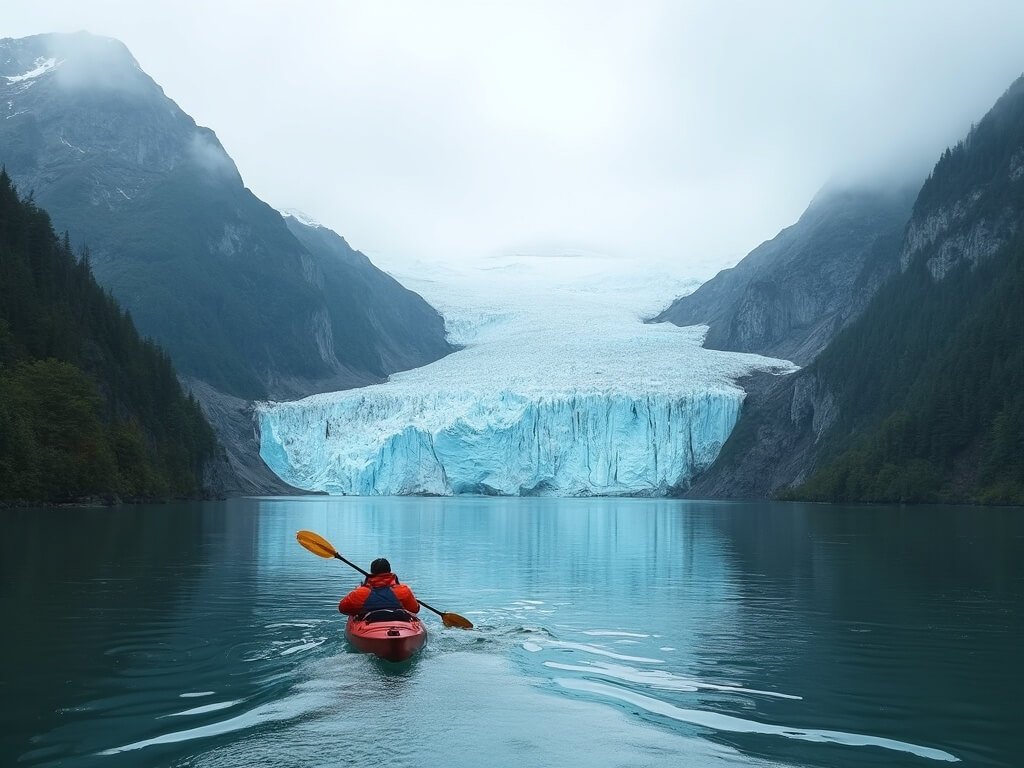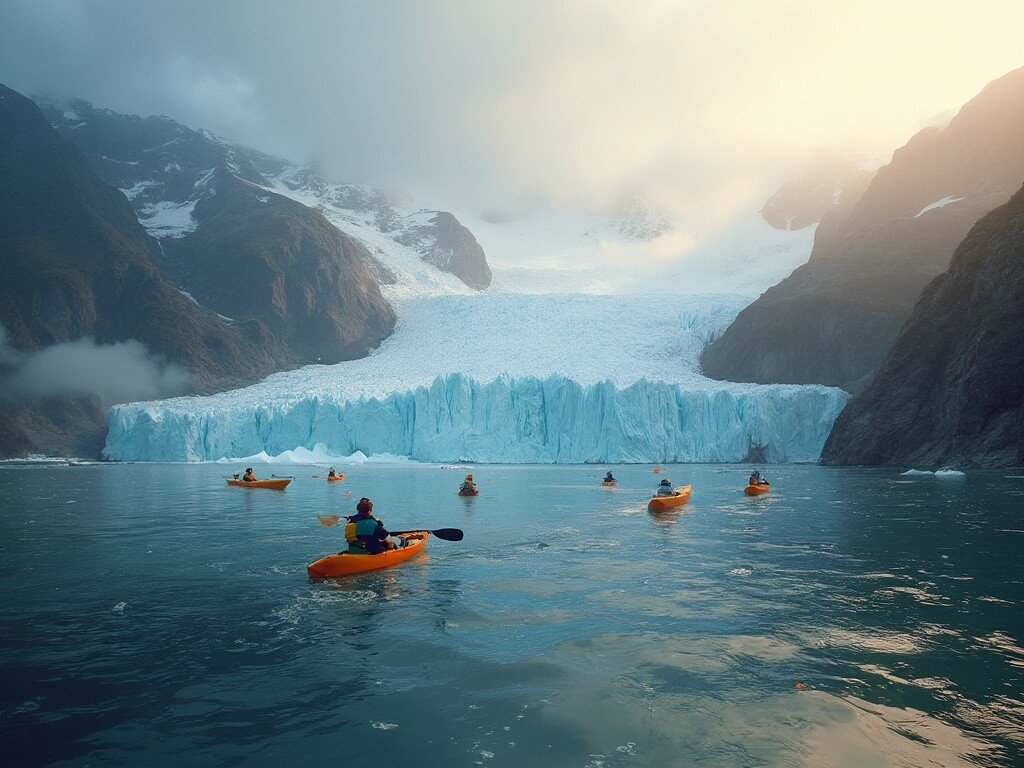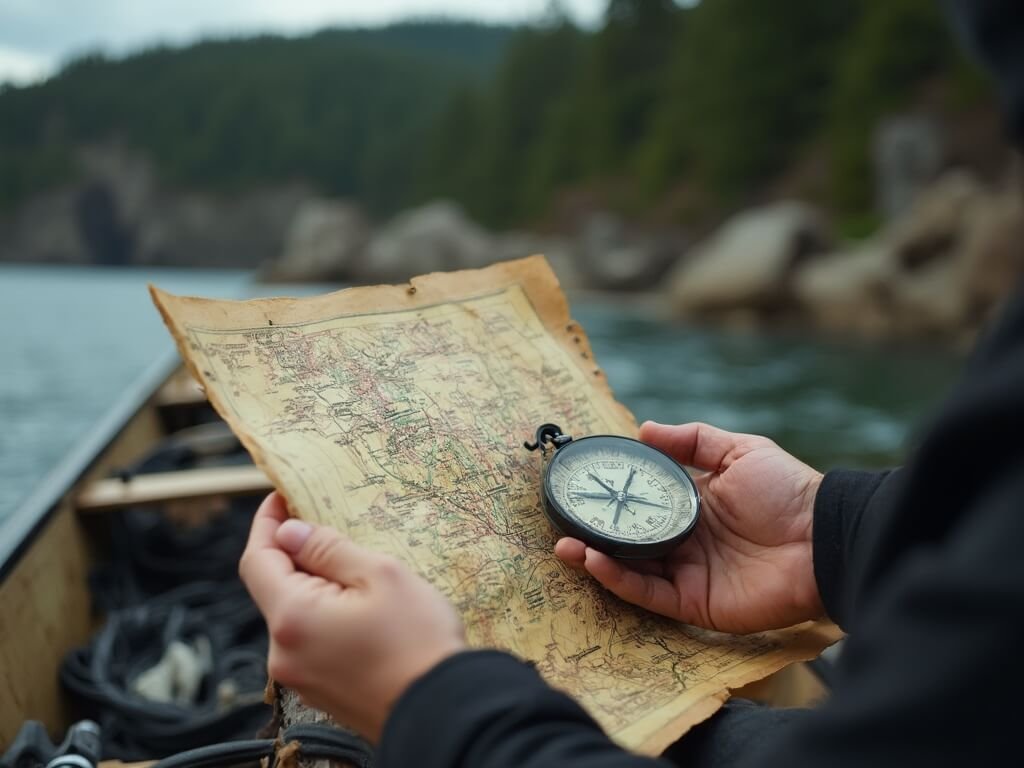Ever dreamed of gliding silently through pristine waters, surrounded by towering glaciers and untouched wilderness? Glacier Bay National Park in Alaska isn’t just a destination—it’s the ultimate kayaking playground for adventurers seeking something truly extraordinary.
My first paddle in Glacier Bay changed everything I knew about wilderness exploration. The moment my kayak slipped into those crystalline waters near Bartlett Cove, I understood why this UNESCO World Heritage Site attracts hardcore adventurers and nature lovers from around the globe.

Why Glacier Bay is the Holy Grail of Sea Kayaking
Imagine a landscape where massive tidewater glaciers meet dense temperate rainforests, creating a playground that’s part National Geographic documentary, part extreme sports adventure. Southeast Alaska’s crown jewel offers something no other kayaking destination can match.
Kayaking Options That’ll Blow Your Mind
You’ve got two primary ways to experience this paddling paradise:
1. Guided Tours: The Smart Traveler’s Choice
- Day trips perfect for beginners
- Multi-day expeditions for serious adventurers
- Expert naturalists leading every journey
- All equipment and safety training included
2. Independent Kayaking: For the Wilderness Veterans
- Rental options for experienced backcountry campers
- Complete freedom to explore remote corners
- Requires significant wilderness skills and preparation
Pro Tip: Most first-time visitors should absolutely choose guided tours. The expertise of local guides transforms a good trip into an unforgettable experience.
Planning Your Epic Kayak Adventure
Getting to Glacier Bay isn’t as complicated as you might think. Most travelers arrive via:
- Gustavus Airport
- Ferry services
- Shuttle transfers to Bartlett Cove
Critical Logistics You Can’t Ignore
Permits? Absolutely necessary.
Orientation sessions? Mandatory.
These aren’t bureaucratic hurdles—they’re designed to keep you safe in one of the world’s most unpredictable environments.
When to Go: Timing is Everything
The magic window for kayaking runs from May to September. Each month offers something unique:
- May: Fewer crowds, emerging wildlife
- June-July: Peak wildlife activity, longer daylight
- August-September: Dramatic landscape colors, whale migrations
Wildlife Encounters That’ll Leave You Speechless
Glacier Bay isn’t just a location—it’s a living, breathing ecosystem. Expect close encounters with:
- Humpback whales breaching meters from your kayak
- Curious sea otters floating nearby
- Bald eagles soaring overhead
- Potential bear sightings on remote shorelines
Safety: Your Number One Priority
Difficulty level: Moderate.
Most guided trips rank around 2/5 in challenge, making them accessible to reasonably fit adventurers. But don’t mistake “accessible” for “easy”—this is still serious wilderness.
Your guides will drill you on:
- Paddle techniques
- Wildlife safety
- Emergency protocols
- Tidal navigation
The Price of Adventure
Budget expectations:
- Day trips: $100-$250
- Multi-day expeditions: $2,240-$3,080
Expensive? Maybe. Worth every penny? Absolutely.
The landscape keeps shifting, quite literally. Glaciers retreat, wildlife patterns change, and each kayaking trip becomes a unique snapshot of an evolving ecosystem.
As my paddle cut through the glassy water that first morning, a humpback whale breached just hundreds of meters away—close enough to feel the ocean’s breath, but far enough to remember who’s truly in charge of this magnificent wilderness.
Your next paddle stroke could be the beginning of the most incredible journey of your life.
Related Adventures
The Hidden Costs Nobody Talks About
Travel insurance isn’t optional—it’s mandatory.
Most weekend warriors forget that Glacier Bay isn’t a casual day trip. Remote wilderness means potential evacuation costs can skyrocket into five-figure territory if something goes wrong.
Recommended insurance should cover:
- Emergency medical extraction
- Wilderness rescue
- Trip cancellation
- Equipment replacement
Mental Preparation: The Wilderness Mindset
Physical fitness matters, but mental resilience determines success.
I learned this lesson during a particularly challenging five-day expedition when unexpected fog rolled in, completely obscuring our navigational landmarks. Our guide’s calm demeanor and systematic problem-solving transformed a potentially dangerous situation into a teachable moment.
Key psychological readiness includes:
- Emotional flexibility
- Comfort with uncertainty
- Basic navigation skills
- Strong situational awareness
Technology vs. Traditional Navigation
GPS devices fail. Batteries die. Your backup plan is old-school navigation.
Recommendation: Master these traditional skills:
- Topographic map reading
- Compass orientation
- Natural landmark recognition
- Tidal current understanding
Climate Change: The Silent Expedition Partner
Glacier Bay isn’t just a destination—it’s a living climate report.
Each kayak stroke passes retreating glacial landscapes that demonstrate planetary transformation. Experienced guides often share scientific observations about:
- Ice volume changes
- Wildlife migration shifts
- Ecosystem adaptation strategies
What Experienced Kayakers Know
Most first-timers romanticize the experience without understanding nuanced realities.
Pro insights include:
- Layers matter more than expensive gear
- Mental preparation trumps physical conditioning
- Flexibility beats rigid planning
- Respect always precedes adventure
Final Expedition Recommendations
Don’t just dream—strategically prepare:
- Take wilderness first aid course
- Practice kayak skills locally
- Research extensively
- Connect with past expedition participants
- Train cardiovascular endurance
- Learn basic glacier survival techniques
The True Cost of Adventure
Beyond monetary investment, Glacier Bay demands something more profound: humility.
You’re entering a dynamic, unforgiving ecosystem where nature writes the rules. Your kayak becomes more than transportation—it’s your passport to understanding planetary complexity.
Booking Your Transformation
Recommended resources for final planning:
- Glacier Bay National Park Kayaking Guide
- Kayaking Through Glacier Bay’s West Arm
- Visit the Alaska Glaciers and Wildlife
- Local kayaking outfitters
- Wilderness training programs
- Professional expedition forums
Pro Tip: Book 12-18 months in advance for peak season expeditions.
Your Wilderness Awaits
Every paddle stroke in Glacier Bay is a conversation with something larger than yourself.
Whether you’re a solo adventurer or group explorer, this isn’t just a trip—it’s a transformative journey through one of Earth’s most extraordinary wilderness laboratories.
Your Glacier Bay kayaking adventure starts now.











